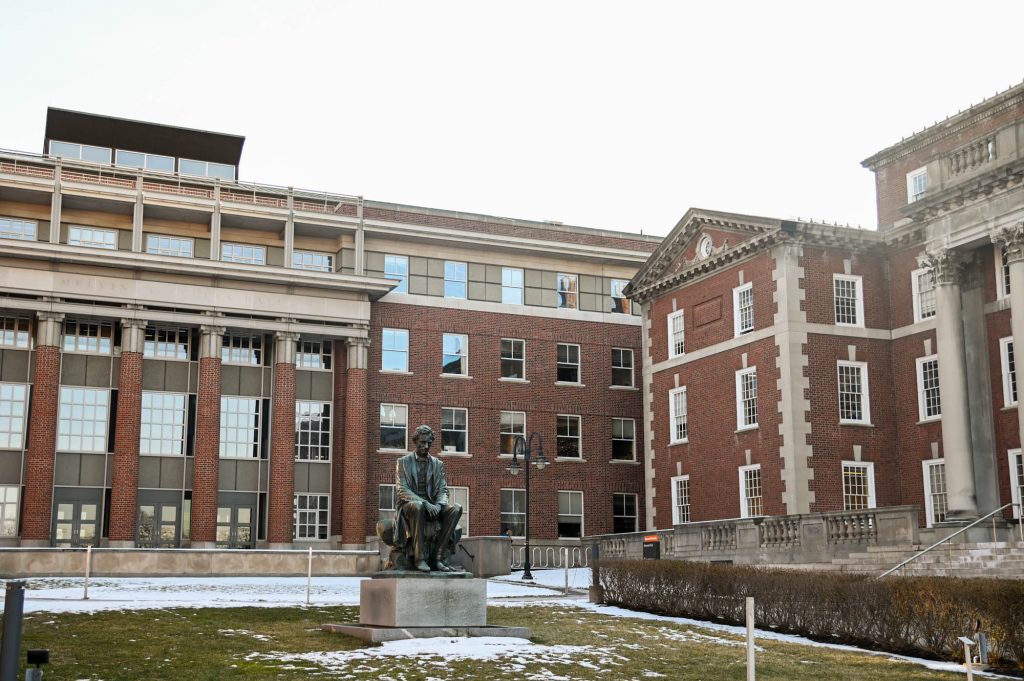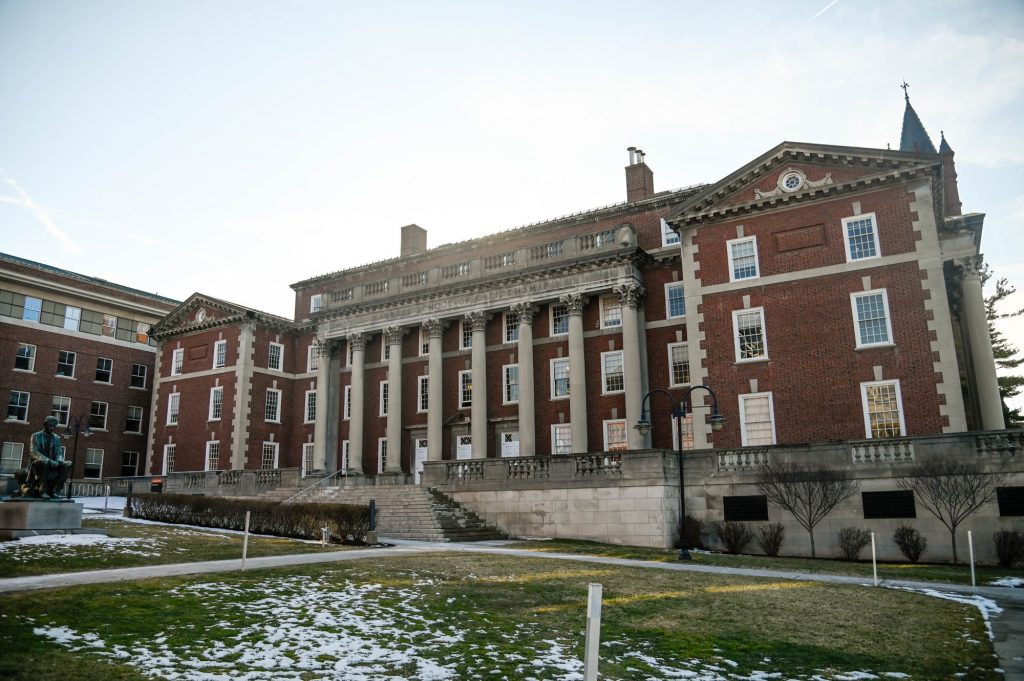Students react to series of swatting threats on campus
Students react to swatting threats on campus
Two false shooter threats and one false bomb threat in the Maxwell School and Eggers Hall were made in the same week.

It was an average start to the week in early February on Syracuse University’s campus with Valentine’s Day only a couple days away.
Sitting in an Eggers Hall classroom for PST 409: Intermediate Analysis of Public Policy, sophomore Keira Kapner noted how quickly the class got to work despite fighting the Monday morning slump.
“It was a day where we were like ‘OK, we have a really busy schedule. We can’t have any distractions, let’s stay on task,’” Kapner said. “And the second the professor said that we see a flood of cops.”
Sitting in the room with her, sophomore Cailyn Thomas watched as silence fell over the classroom.
“It felt like we were all deer in headlights,” Thomas said. “We all just stopped what we were doing and nobody talked. We just sat there in our chairs for this whole interaction.”
As Kapner and Thomas both recalled, a group of officers quickly ran up the stairs outside of their classroom in Eggers 225 B, making their way around the floor and into the Policy Studies office.
Peering into the office, Thomas knew something wasn’t right.
“It just looked like they were having a normal conversation,” Thomas said. “But the lady who sits at the desk looked scared.”
Leading the class at that time, policy studies assistant teaching professor Richard Barton remembers the same “alarming sight” described by Kapner and Thomas.
“I don’t think anyone in 409 said anything about an active shooter,” Barton said. “But I think living in the United States in this era, we were all thinking that.”

In a campus-wide email sent out on Feb 12, at 12:22 p.m., SU’s Department of Public Safety shared that they had received a report of an active shooter at Maxwell Hall and Eggers Hall at 11:47 a.m., which was deemed to be a false report.
This was the second alert in a little more than 12 hours for another false report of an active shooter at Maxwell Hall and Eggers Hall on Feb 11.
Following the second threat, DPS posted an article, titled “How DPS Communicates in the Event of an Imminent Threat to Public Safety,” detailing how the on-campus department responds and communicates these threats.
According to the report, whenever DPS learns of any claims of an active shooter on campus, they “will appear on the scene as they would in the event of a confirmed threat,” while also working to confirm whether or not the claim is real. The officers will respond, “with their weapons drawn as is standard law enforcement protocol,” scoping out the scene until it is discredited.
At that point, DPS will immediately communicate the information with the SU community via the Orange Alert System, whether or not the threat is legitimate. The report also urges members of the SU community to review the “Run. Hide. Fight.” video, which further explains how to respond to an active shooter threat.
Around 4 p.m. on Friday, Feb. 16, a third email from DPS was sent to the SU community, describing a “FALSE Bomb Threat Reported at Maxwell, Confirmed to be FALSE.”
All of these reports were deemed instances of swatting or the “action of making hoax phone calls or reports to report serious crimes to emergency services.” This is not SU’s first experience with these types of reports, as the university experienced a similar uptick in swatting instances just last year.
While Barton noted how visibly fast the response was from law enforcement that day he was in Maxwell, he said it would be beneficial to develop a plan moving forward that could be better communicated to the student body.
“When I think of where there’s room for improvement, I think that it would be good for the university to provide more specific guidance that is classroom-specific, or room-specific,” Barton said.
Barton said the Maxwell classroom he was in is commonly referred to as the “fishbowl” because of the number of windows it has.
“In hindsight, we probably should have moved into the suites on the side that were not full window rooms,” he said. “We’ve discussed if this happens again, that is what we are going to do.”
For many students, these false reports served as a realization of their lack of knowledge of how to handle a potentially more serious situation.
“I think if something were to actually happen, I wouldn’t know what to do,” Kapner said, adding that the Maxwell School administration should have acknowledged the pattern of threats directed at the school.
In her comments to the faculty University Senate meeting on Feb. 21, Provost Gretchen Ritter said the incidents had prompted discussions about how to best handle future threats.
“Thanks to some productive conversations with DPS and other campus stakeholders, this week the university is reviewing and, where appropriate, revising our protocols to align with best practices in law enforcement and communications,” Ritter said.
Also, Ritter mentioned that Public Safety officials would be meeting with various groups to discuss how to deal with swatting calls.
DPS declined an interview request, citing an ongoing active investigation.
Infographics generated from survey responses collected by students in Prof. Dan Pacheco’s JNL 221: Foundations of Data and Digital Journalism course.
